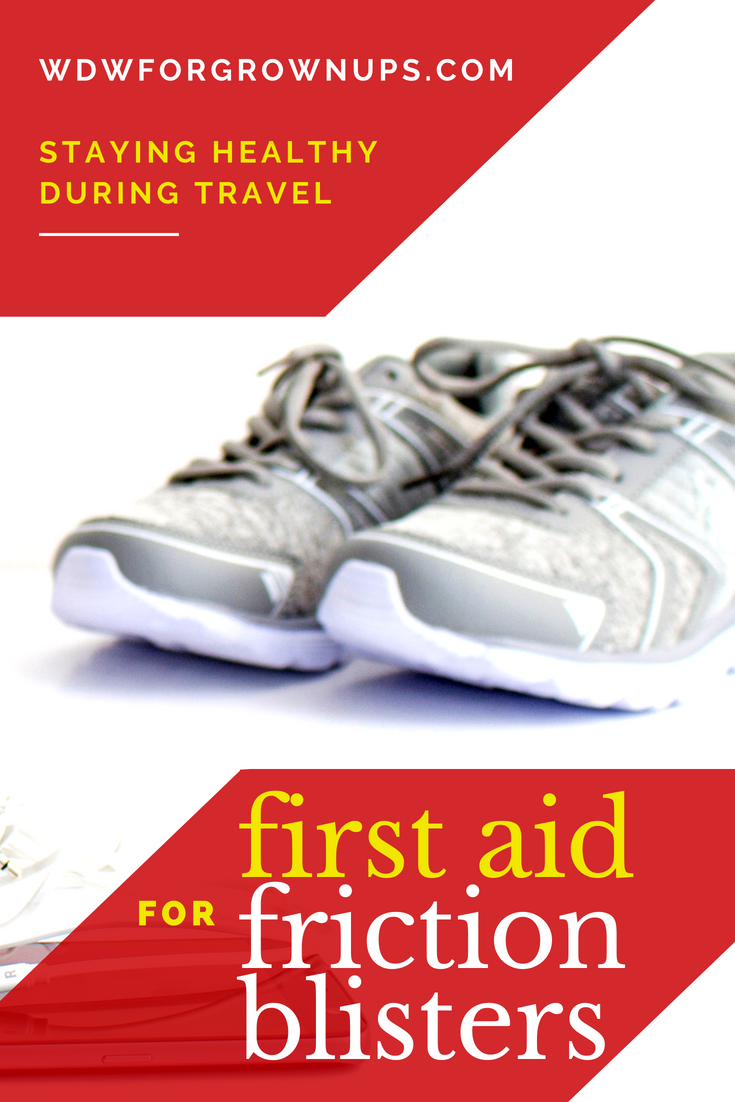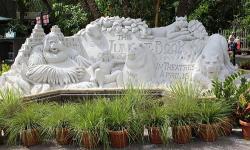First Aid For Friction Blisters And What You Should Know
Blisters are probably one of the most common injuries when on vacation at Walt Disney World. But what causes the blister, you ask? Simply put, a blister forms when something rubs against the skin. On vacation, blisters are usually caused by ill-fitting or improper footwear.
 First Aid For Friction Blisters And What You Should Know
First Aid For Friction Blisters And What You Should Know
A blister can form on the bottom of the foot, on the heel, on the top of the foot, or (in some cases) even between the toes. The best way to treat a blister is to actually prevent it. Do not wear new shoes on vacation if they have not been broken in, and make sure the shoes that you are wearing fit properly. If you are wearing sandals or flip-flops, make sure that they don't rub on your feet too much.
Depending on where they develop, blisters can be anywhere from a minor annoyance to a major pain. If you think you're getting a blister, the first thing that you should do is stop walking. Sit down, take off your shoes and socks, and take a look at the area. If it looks reddened or irritated, you can stop the blister from getting any bigger by covering it with a bandage, a special blister pads, or a cut piece of moleskin. I'm a fan of the Adventure Medical Kits Blister Medic
because it includes a number of precut pieces of moleskin of various shapes and sizes as well as alcohol pads and antiseptic towelettes, which are useful in skin preparation and wound cleaning. The alcohol pad is helpful in getting the skin ready to put on the moleskin, while the antiseptic towelettes help clean the skin to prevent infection.

Unless the blister is extremely uncomfortable, you should not open it, because an open wound is more likely to get infected. The best treatment for a blister is to stop the rubbing that is giving it to you in the first place. Sometimes this means that you have to change footwear, my wife has had to buy more than one pair of new Mickey Crocs at Walt Disney World because of blisters. But sometimes it can be as simple as loosening your shoelaces little bit. If the blister comes open on its own, do not remove the flap of skin that is left hanging. Instead, cover the blister with a bandage and protect the area from foreign material, including dirt, sand, sweat, and untreated water. Even pool water, which is capped sanitary by chlorine, is not sterile and should be kept out of the wound if possible.
If it is necessary to drain the blister, first wash the area and your hands with soap and water. Take a needle or pin and clean it with rubbing alcohol (burning it clean with a match or lighter is not a good idea, since you can introduce soot and other foreign material to the wound, which can lead to infection) and carefully poke a hole in the side of the blister near the base. Gently press the fluid out of the blister. As mentioned previously, do not remove the flap of skin, since it helps protect the new skin under the blister. Put some antibiotic cream or ointment on the blister and cover the whole thing with the bandage.

If your blister starts to drain fluid that is not clear and straw colored, you might have an infection and should see a doctor. If the area around the blister starts to turn red in warm, or have red streaks coming out of the area, those are also signs of infection.
All in all, a blister doesn't have to be a drag on your vacation. In fact, with a little careful preparation, you won't even have to worry about a blister. Just make sure that your footwear fits well and you won't have any problem.
-----
Thanks so much to our Health & Safety blogger, Geordon Van Tassle, for this informative guest post. If you would like to learn more about packing your travel bags to be prepared visit his blog Hurricane Dad for a more details.











finngirl wrote on Thu, 06/19/2014 - 13:35:
I second the moleskin tip. I used it for the first time a few years ago, and haven't had trouble with blisters on vacation since.
I've also found the blister prevention sticks handy - the ones that apply like stick deodorant. Applying that to areas that are prone to blisters really helps to keep your feet blister free.
Michelle wrote on Sat, 06/21/2014 - 15:11:
Don't rely too much on the first aid stations for help. When I had a blister, all they offered was a band aid :( Bring your own stuff because I couldn't find any blister stuff anywhere on site.
Post new comment